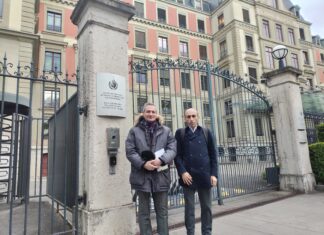PRAGUE (RFE/RL) — The economy of Armenia may be among the latest victims of Russia’s invasion of Ukraine.
Thousands of workers at the country’s largest textile factory are facing layoffs or wage cuts amid similar fears at other industrial firms and businesses.
The reason? The country’s currency, the dram, has risen dramatically in value in recent months, making Armenian exports more expensive and therefore less competitive.
Oddly enough, an influx of Russians fleeing their homeland amid a further clampdown in the wake of the invasion also may be putting pressure on the dram, analysts say.
The Gloria textile plant in the northern city of Vanadzor ships most of the clothing it manufactures to Western Europe, owner Bagrat Darbinyan told RFE/RL’s Armenian Service.
Due to a drop in exports, Darbinyan said he’s been forced to cut production costs to compensate for the loss of revenue. He said he has already told the company’s workers they would need to accept a 30 percent reduction in their wages or risk being sent on unpaid leave or losing their jobs altogether.
“I am ashamed to walk out on the shop floor,” Darbinyan said. “People are already not paid much, and I want to cut their wages. But there is no other way out.”











